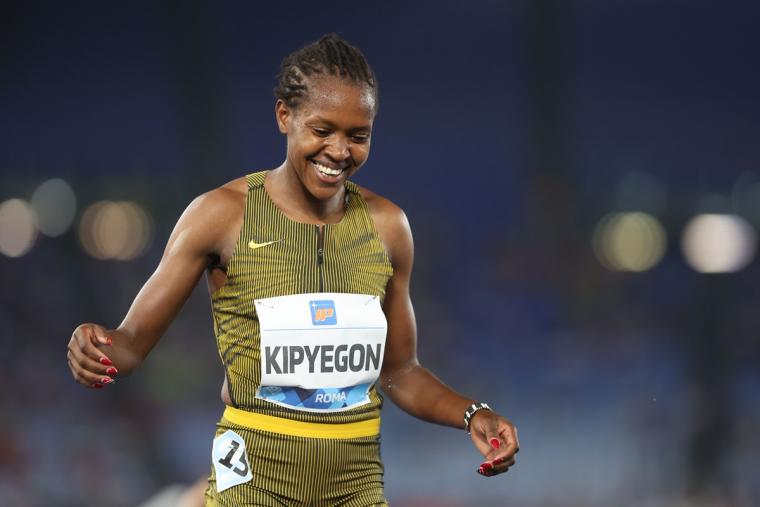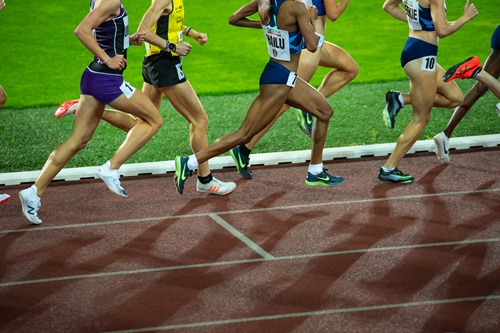
Photo © Marco Iacobucci | Dreamstime.com
Let’s get this out of the way first: It’s not all that important, historically, that Kenya’s Faith Kipyegon came up seconds short in her recent attempt to break the four-minute mile. What is important is the attention she got for that 4:06.42 time – and how that will translate into inspiring other athletes to run. On the sports tourism level, the important fact is that runners young and old saw her and realized they too could challenge themselves.
While men have broken the four-minute mile, no woman has. Yet.
NPR News noted that after the attempt, held in the famed Stade Sébastien Charléty track in Paris, Kipyegon herself stated, “That is why I was coming here to, you know, try to be the first woman to run under four minutes. But I've proven that it's possible," she added. "It's only [a matter of] time. But if it's not me, it will be somebody else."
Kipyegon, widely considered to be one of the finest runners the world has ever produced, is keenly aware of what her attempt represents, and of the impact it can have on aspiring athletes at all levels.

With the most important track and field competition of 2025, the World Athletics Outdoor Championships in Tokyo, only two months away, Kipyegon was putting a lot on the line to race on a track in Paris for a number that could not appear in record books, since the event was considered an exhibition.
But she ran it anyway. And that, history will note, is what was important. In making the attempt, she encouraged others to rethink what is possible.
Runner’s World said it best: “Kipyegon risked a lot for a single time trial: her body, her mind, her season. But she runs selflessly. She runs for her daughter, Alyn. She runs for other young girls in the world wanting to push their own limits. She runs for her country. On Thursday, Kipyegon challenged herself for the benefit of everyone else.”
And that includes youth athletes. The U.S. has long had a deep bench of runners coming through the college system and onto the international scene, and those get their start at the high school level.
Track & field has long been one of the most popular sports at the high school level; the National Federation of State High School Associations (NFHS), in its most recent participation survey, noted that outdoor track and field registered an increase and remained the top three participatory sports for girls, growing four percent to 506,015 students nationwide.
On the boys side of high school sports, NFHS noted that outdoor track & field stayed in the top 10 (in second place, with 625,333 participants). It is, in fact, second only to football among boys. Cross country running was also in the top 10, in the number seven position.
And in a survey of 100 races nationwide, the number of finishers across the 5K, 10K, half marathon and marathon categories grew by an average of 15% in the second half of 2024, compared to the second half of 2023, noted Running USA.
The growth of women in running at the amateur level has also been remarked upon.
Sneakers4Good notes, “The ratio between male and women runners is almost completely equal. Statistics show that 45 percent of marathon runners are women. Studies have even shown that women are better at holding a consistent pace throughout running a marathon.”
Thanks to better training, better nutrition, better technology and a better understanding of the human body, female athletes have gotten faster over the years, but it didn’t happen all at once. Diane Leather, the first woman to run a mile in less than five minutes, had to try twice before she finally came in under the mark in 1954.
Women have had a long road to travel to even be considered competitive runners, notes this article in NPR, which examines insights in a new book, Better, Faster, Farther: How Running Changed Everything We Know About Women. Author Maggie Mertens discusses the multitude of falsehoods that long surrounded women runners. Chief among these was the fact that participating in running events could damage women's fertility. In fact, it would not be until 1984 that a women's marathon was added to the Olympic Games. (The inaugural event was won by the USA's Joan Benoit Samuelson, who, by the way, has two children.)
And an industry sprung up around women's running, propelled by luminaries like Benoit-Samuelson and Kathrine Switzer (who had in 1967, made headlines by running the Boston Marathon before women were allowed to do so), as well as Allyson Felix, Molly Seidel and Florence Griffith Joyner (colloquially known as Flo-Jo), all of whose apparel, shoes and accessories created a strong market for companies and for the women who were now participating in running events nationwide. And, of course, another important name on that list is Faith Kipyegon.
Industry giant Nike absolutely realized the value of the Kipyegon’s efforts; in fact, it created and sponsored the event in which she competed. The company planted its flag on the #Breaking4 campaign in every way, supplying Kipyegon with elite athletes (male and female) to act as pacers, plus making available an electronic series of lights around the perimeter of the track to show her how fast to run. It also outfitted her with its newest and most innovative gear, from her aerodynamic track suit to her spikes. And it publicized the event so that the entire industry was aware of it.

According to Reuters, Nike’s efforts weren’t entirely altruistic because they represented a chance to win back female consumers who have drifted away from the brand.
In fact, notes Reuters, “From 2021 to 2024, Nike's share of the global sports footwear market dropped from 28.8% to 26.3%, according to Euromonitor International, with consumers defecting to smaller, newer brands like On and Hoka. Nike's popularity has slipped with women in particular. Sales of Nike Women products grew just 4.4% over that three-year period, while Nike Men sales grew 13.5%.”
Women’s athletic attire companies like Title Nine, Lululemon and Athleta have moved in and caught the interest of female athletes, with their messages of empowerment and body confidence. Now, Nike wants those consumers to return; in fact, the Reuters article notes, it has become “obsessed with getting women back."
It’s not the first time Nike has sponsored a record attempt in order to promote its products. In 2017, # Breaking2 showcased athletes Eliud Kipchoge, Lelisa Desisa and Zersenay Tadese as they attempted to run a marathon (on a track and with a pace car) in less than two hours. While no records fell then, Kipchoge did break the two-hour mark in a 2019 attempt and, says Reuters, “the hype created around the Vaporfly shoes he wore helped Nike's market share in running climb to a record high.”
And Eliud Kipchoge was there for Kipyegon’s attempt, as was Team Great Britain star Georgia Hunter Bell, who won bronze at the Paris Olympics in the same race that saw Kipyegon fly around the track on her way to a gold medal at the Stade de France.
But industry leaders look at Kipyegon’s run as more than a grab for attention, for shoe sales or for a place in the history books. They look at it as the thing that makes athletes, from youth to pro, rethink what is possible. And they look at it as something that will inspire children and adults alike to pursue sports.
As the headline in the Runner’s World article noted, Faith Kipyegon Didn’t Break a 4-Minute Mile. She Still Changed Running Forever.

